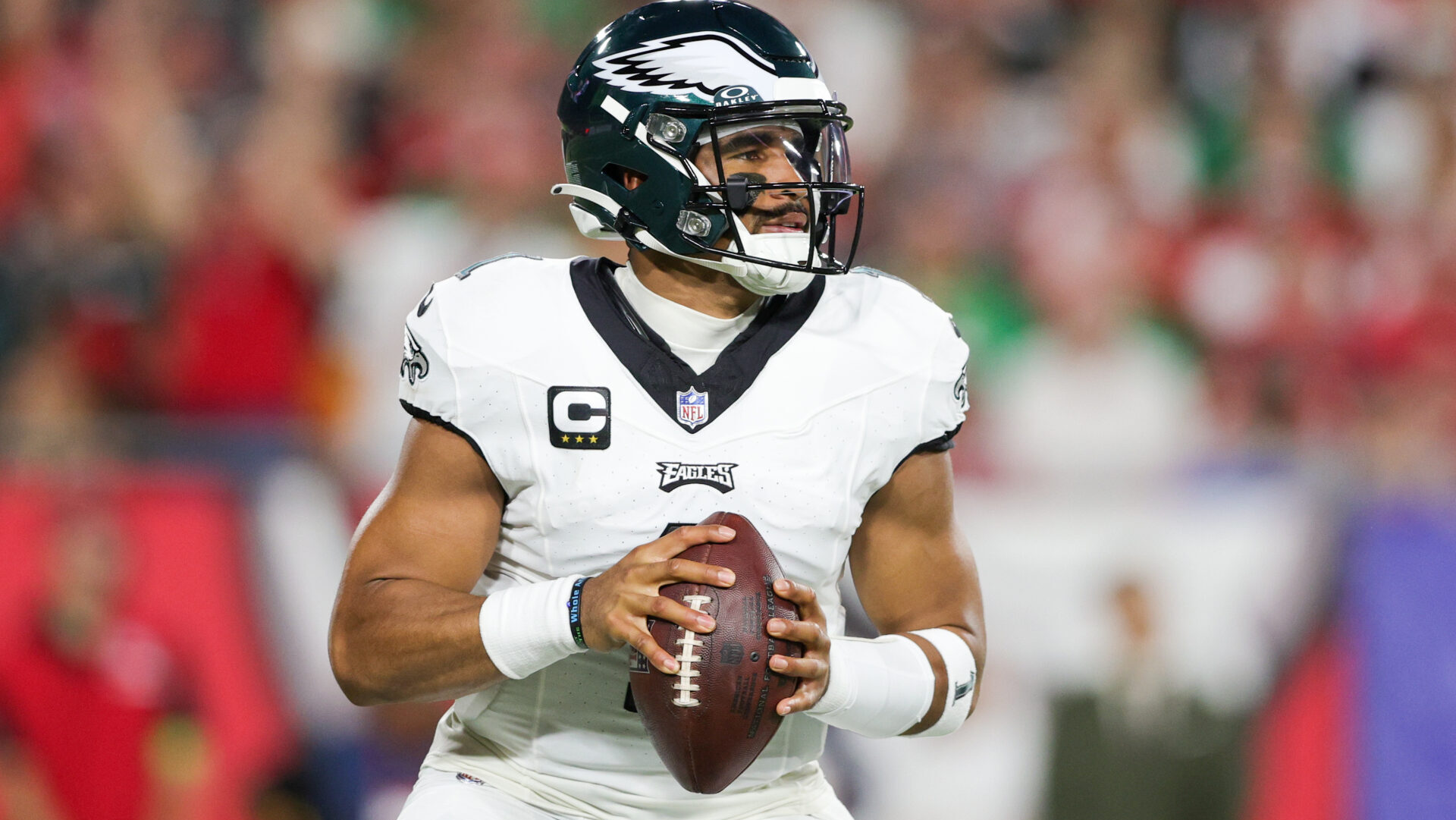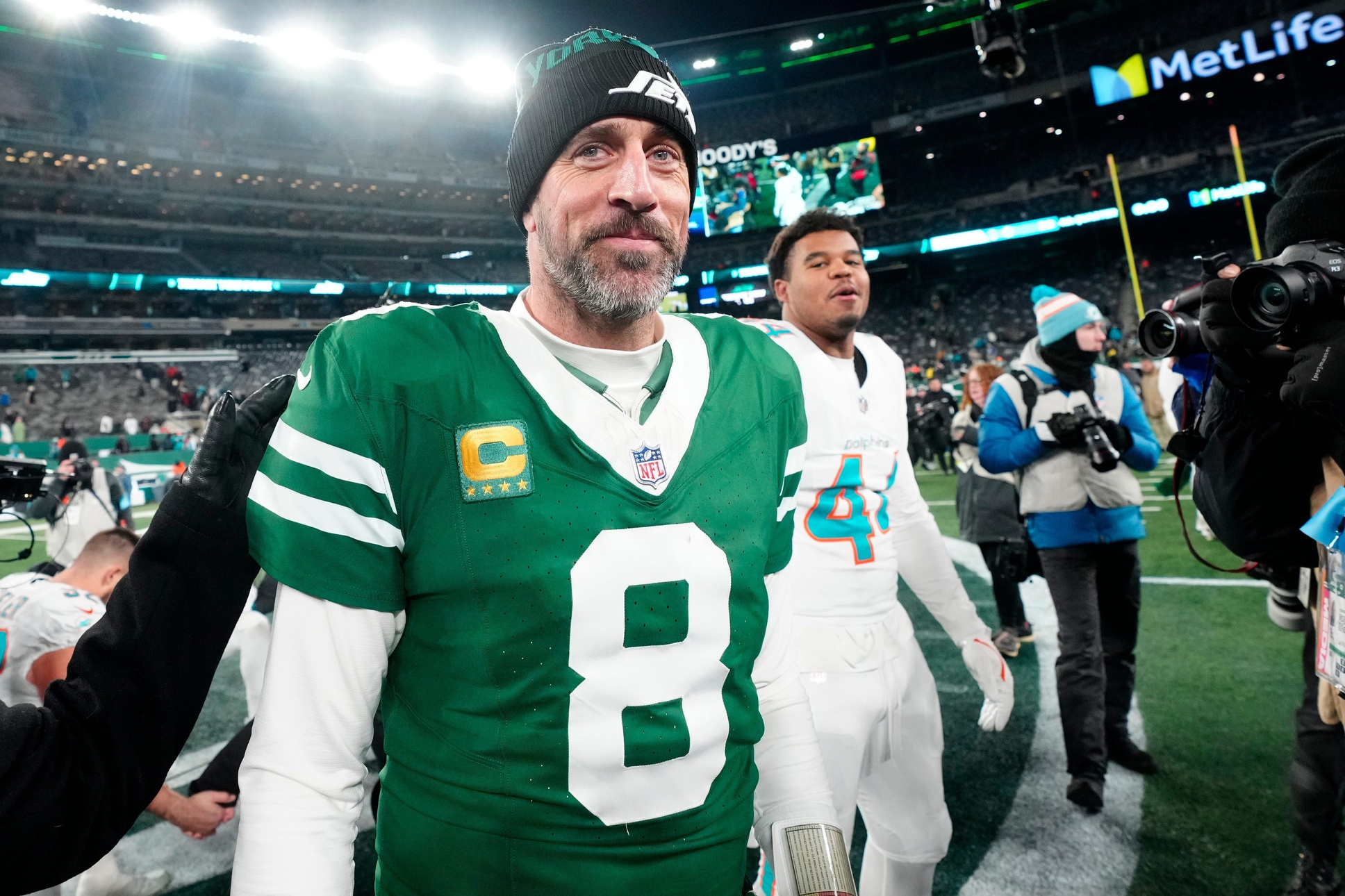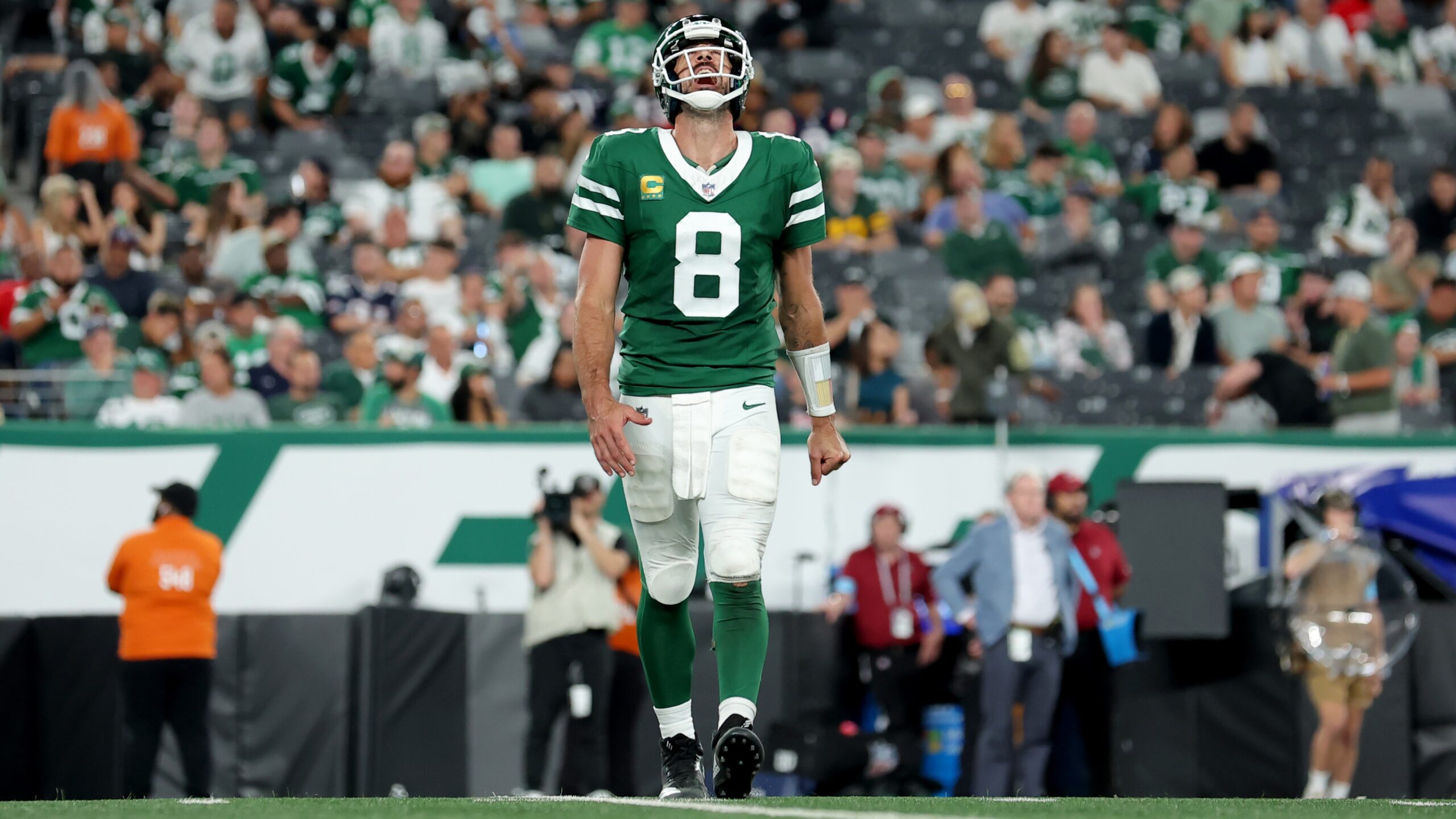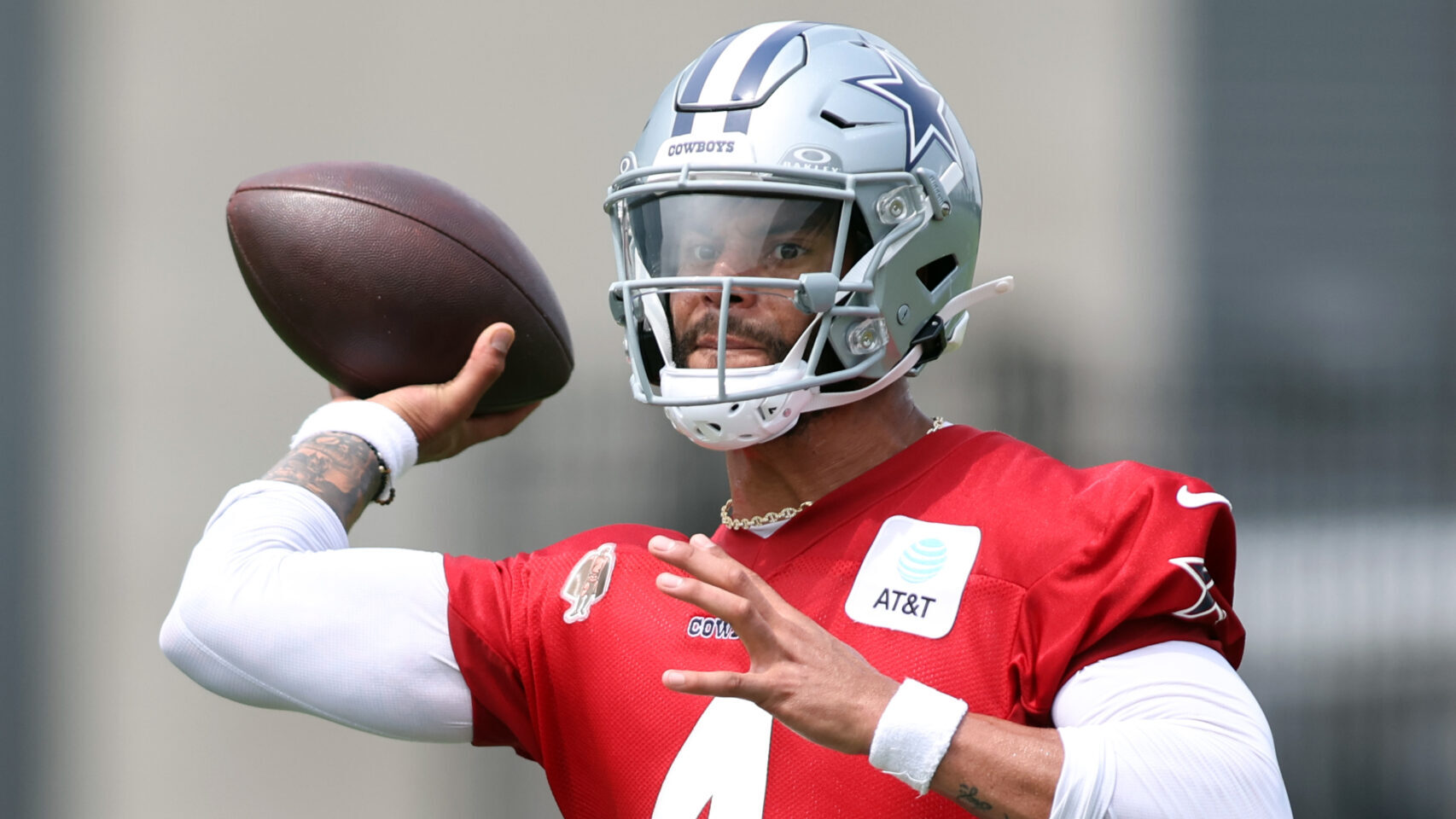Analysis
10/7/23
6 min read
NFL Myth Busting: Can Opponent Offenses Truly Be Solved?
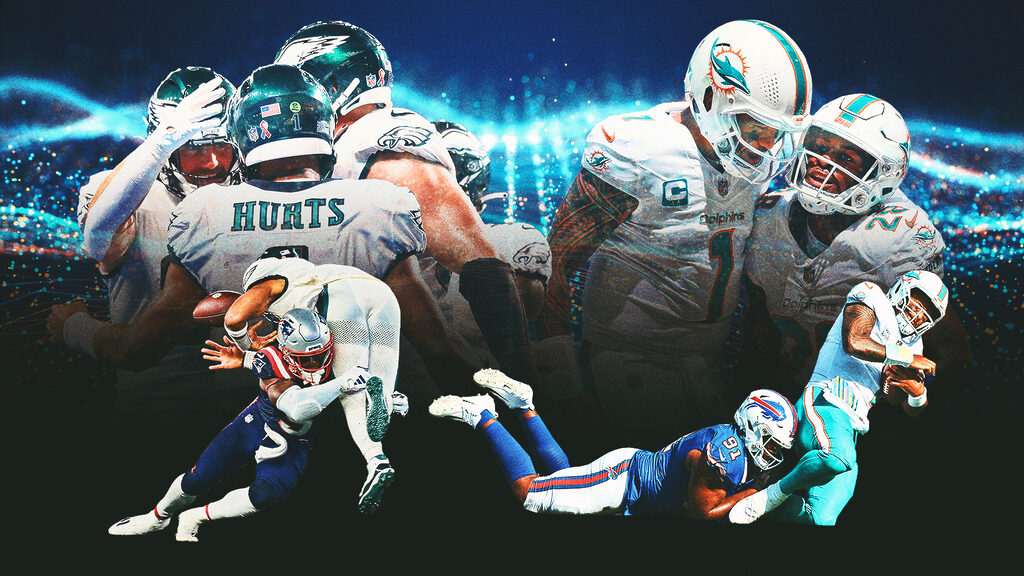
THE MYTH: Once a runaway offense has been slowed or solved (think the Miami Dolphins last week), future opponents will follow that game plan as a blueprint for success.
THE REALITY: That makes sense, but it’s not what happens. Instead, almost every coach comes up with reasons to rationalize not taking that path and reverts to playing familiar defensive schemes … which is not how you combat an offense like Miami.
I realize that’s a broad generalization, so let me be specific and offer the Philadelphia Eagles as Exhibit A. A year ago, they scored more points (477) than everyone but the Kansas City Chiefs (480) and ranked third in overall offense. Nine times, they put up 30 or more points. Eight times, they had double-digit victories. Their quarterback, Jalen Hurts, was runner-up to league MVP Patrick Mahomes, while wide receivers A.J. Brown and DeVonta Smith combined for 18 TDs and nearly 2,700 yards.
In short, they had a formidable offense.
Now, fast-forward to this year’s first game– the Eagles vs. New England in Foxboro – and look how Bill Belichick and the New England Patriots defended them. They employed five- and six-man defensive lines, hoping to confuse Hurts and slow down the game.
And it worked.
No, the Patriots didn’t win, but they did push Hurts & Co. to the mat before dropping in a 25-20 decision. The Eagles had 251 yards in offense, Hurts threw for 170 yards, nobody had more than 79 yards receiving and only one drive was longer than 50.
Blueprint for Success?
Essentially, the Patriots laid out a blueprint for others to follow.
Only that didn’t happen. Granted, the Patriots didn’t stop Philadelphia, but that’s near impossible. The Eagles are too talented. But New England did slow the Eagles down, and isn’t that the idea? Keep them at 20-25 points, so you have a chance to win.
The Patriots did, but only because of what they accomplished on defense. When they had five or six players on the defensive line, they weren’t always linemen, and they didn’t have to blitz. All they had to do was be there when the ball was snapped, increasing their chances of stopping the run and making it difficult for Hurts to figure out who was covering whom.
It wasn’t something Belichick invented that evening. The Dallas Cowboys tried it last year with some success in the only game Hurts started against them. The final score was 26-17, Philadelphia, but if you saw it, you’d know the Eagles had to battle to reach the finish line. They had 268 yards, Hurts threw for 155 and they gained 20 or fewer yards on seven of their 13 possessions.
OK, so we’ve documented there’s a defensive scheme you might want to try when playing someone like Philadelphia. Except almost nobody’s doing it. Look no further than Week 2 when the Minnesota Vikings met the Eagles. For whatever reason, the Vikings failed to follow the Patriots’ script as a game plan – using it only occasionally and rushing three linemen at times.
The result was predictable: They lost 34-28, with the Eagles producing 430 yards of offense, including 259 rushing.
But the Vikings are more the rule than the exception. What you’re seeing with Philadelphia’s opponents – including Minnesota – is that they’re coming out in nickel, with four down linemen and two linebackers three yards behind, and all that’s done is make it easy for D’Andre Swift to gash them. Almost all of his carries are against that defense, and that’s been true the last year-and-a-half for the Eagles – no matter who the backs are. They’re gaining a lot of yardage on run plays, even when opponents appear to be playing the run – basically because they’re playing it out of a nickel.
Coaches are Often Inflexible
This is compelling evidence of inflexibility, with some coaches failing to read a road map to success. It makes no sense, but that’s how this league works. Coaches like to do what they’ve been doing, so they don’t adjust for that particular week’s opponent. The only team that really does that is New England, where they have smart players who can absorb a game plan. But the others? Almost every Eagles' opponent comes out in nickel and struggles vs. the run and the pass.
Why? Simple. Hurts knows exactly what’s happening before the ball is snapped. Each week, I turn on the tape and say, “How carefully did defensive coordinators study previous opponents who had success against the Eagles?” Because, at this point, it’s obvious what works and what doesn’t.
Yet you continue to hear explanations like, “Well, we don’t have the same personnel as Bill Belichick, so we can’t do the same thing.” OK, fine. But, then, guess what happens? They get blown out, that’s what. As I said, occasionally, you’ll see that teams try it, but they don’t run it as a base defense, and I’d like to ask: Why?
The Eagles have a high-powered offense that some opponents schematically slow down. But for inexplicable reasons, other teams aren’t copying those opponents. They have the blueprint, and it’s been proven to work. Yet few are paying attention. So, Hurts wins 21 of his last 22 regular-season starts, and the Eagles are one of only two undefeated teams in the NFL today.
That’s a long way of saying that just because a quick-strike offense like Miami was stopped by the Buffalo Bills last weekend, it doesn’t mean the Dolphins have been exposed. History tells us that’s not what happens. The chances of the New York Giants doing to Miami this week what Buffalo did last are about 10 percent.
I know because I’ve seen it all too often with Philadelphia.
Joe Banner is a former front office executive for the Philadelphia Eagles and Cleveland Browns. He was a part of an Eagles franchise that made a Super Bowl and played in four NFC Championship Games. Follow him on Twitter at @JoeBanner13

